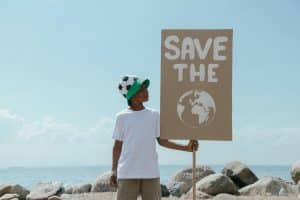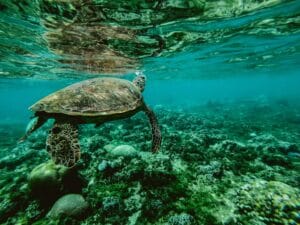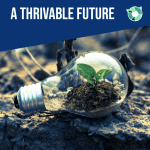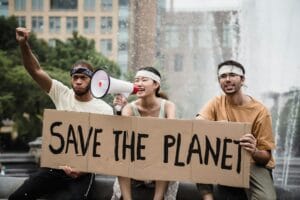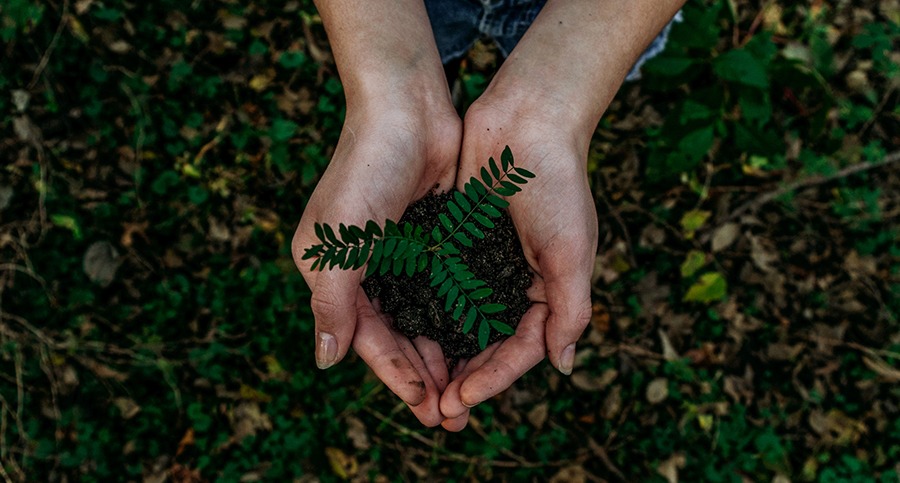Climate change has been identified as one of the biggest causes of biodiversity loss (Yousefi et al., 2019). The IPBES (The Intergovernmental Science-Policy Platform on Biodiversity and Ecosystem Services) reported that species are going extinct 10–100 times faster than the natural rate of the past 10 million years. Around a quarter of animal and plant species face the risk of extinction, and many species are disappearing from ecosystems (IPBES, 2022). A major impact of climate change on biodiversity loss is the increase in the intensity and frequency of wildfires, storms, and periods of drought (The Royal Society., n.d). Wildlife populations have declined by an average of 69% between 1970 and 2018, with mammals, birds, fish, amphibians, and reptiles facing significant losses. Latin America and the Caribbean experienced the worst decline at 94%, followed by Africa at 66%, Asia and the Pacific at 55%, North America at 20%, and Europe and Central Asia at 18%. While this does not equate to 70% of animals being extinct, population drops have increased extinction risks unevenly across regions and species (Greenfield, 2022).

Source: Greenfield, 2022
Defining Biodiversity Loss
Definition
Biodiversity refers to the variety of life forms, including plants, animals, and microorganisms, inhabiting the Earth. Biodiversity loss occurs when there is a decline in this variety and abundance, often as a result of human activities. These activities negatively impact natural ecosystems, leading to the reduction of species and the disruption of ecological balance. Processes like the pollination of crops, regulation of climate, water purification, and disease and pest control all rely on biodiversity (IFaw, 2024). Humans are accelerating biodiversity loss through land use, sea level rise, climate change, species overexploitation, invasive species, disease, and pollution.
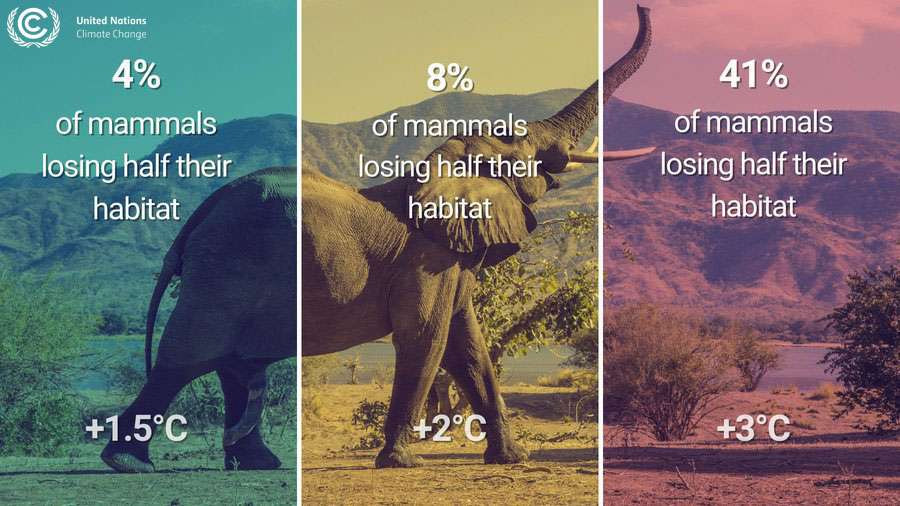
Source: United Nations., n.d
Examples
A thriving planet relies on biodiversity as a fundamental pillar for its survival. In India, 3% of bird species and larger animals face extinction, as many as 19% of amphibians are critically endangered and bee colonies are collapsing across the country. Already 90% of India’s biodiversity hotspots have been lost as of 2021 owing to climate change. The Indo-Burma hotspot is the worst affected and has lost 95% of its vegetation area, because of which over 12% of the animal species including birds, mammals reptiles, and amphibians are endangered (GAG, 2021).

Source: GAG, 2021
Scientists analysed over 147,500 species for the IUCN Red List and found more than 41,000 are at risk of extinction. Cycads, ancient plants, are the most threatened, with over 80% at risk.
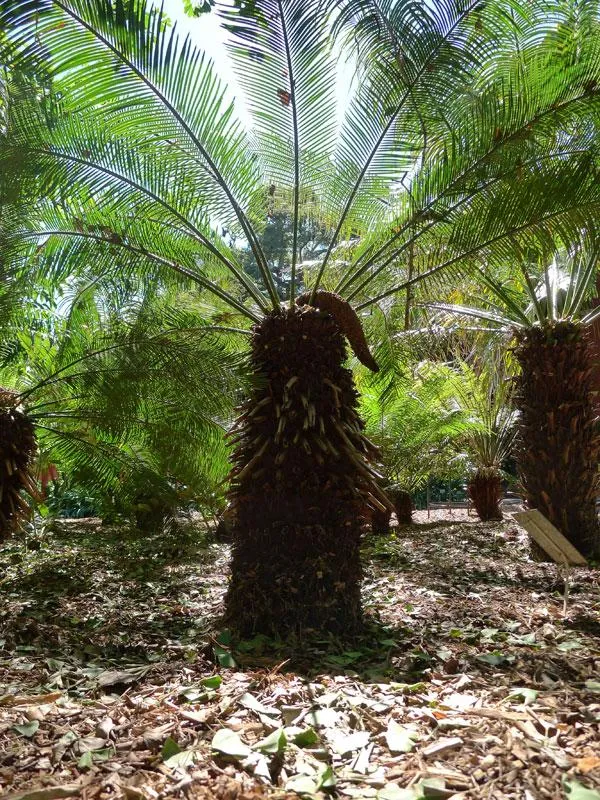
Source: Choi,2011
Over 40% of sharks and rays and 20% of birds could also vanish. Human dominance has led to livestock and humans vastly outweighing wild animals. Plants make up 82% of global biomass, while livestock accounts for 60% of mammals, humans 36%, and wild animals just 4% (Greenfield, 2022).
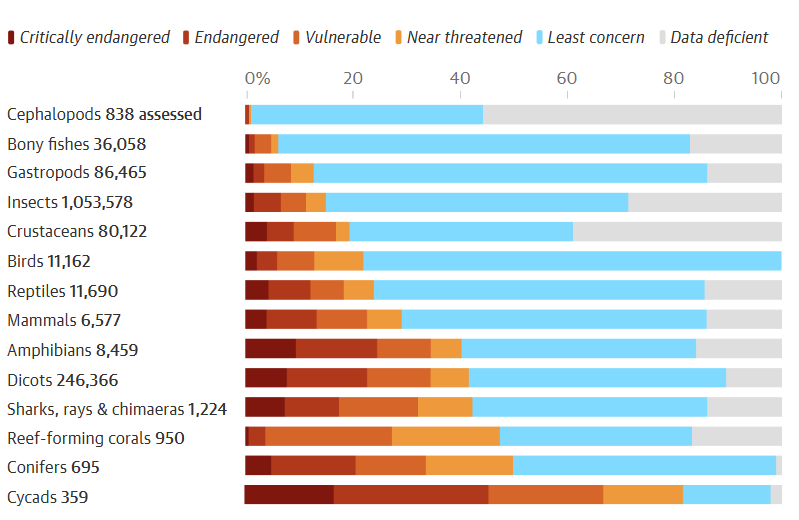
Source: Farquhar, 2021
Impact of Climate Change on Biodiversity Loss
Climate change impacts all continents (Greenfleet, n.d). Climate change is one of the greatest environmental challenges of our time, and its impact extends far beyond melting ice caps and rising sea levels. One of the most serious consequences of climate change is the loss of biodiversity, as species struggle to adapt to changing temperatures, weather patterns, and habitats (Acorecycling, 2023).
Impacts of Climate Change on the Biodiversity of Plants and Animals
Climate change can impact biodiversity through drought, bushfires, storms, ocean acidification, sea level rise, and global warming. These impacts can lead to changes in the composition of plant and animal communities, and alterations in the timing of life-cycle events such as flowering and migrations. Global warming disrupts these natural patterns (Feeley and Freeman, 2023). Climate change is causing the first extinctions owing to climate, instead of other factors like habitat loss or hunting. For example, the North Atlantic Right Whale is at risk of extinction owing to a warming ocean and conflicts with humans (Notebaert, 2017).
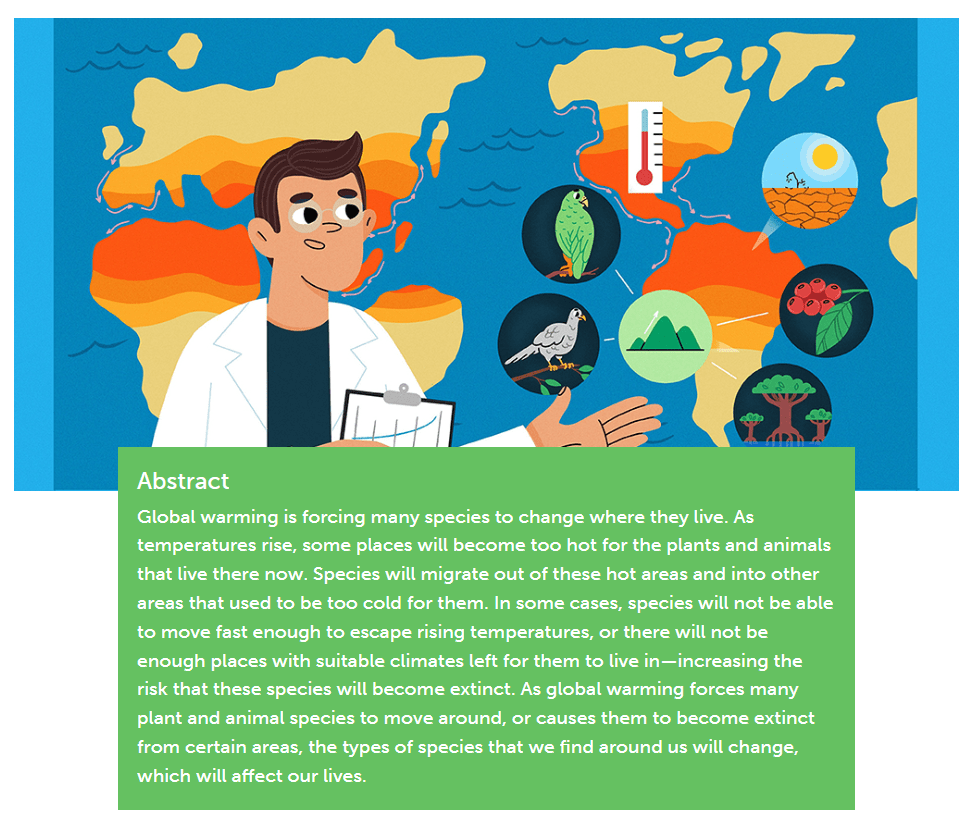
Source: Feeley and Freeman, 2023
Interactions between flowering plants and pollinators are crucial for both the environment and the economy. About 88% of flowering plants depend on animals for pollination. Disrupting this process can impact other species, affecting fruit-eating animals, seed dispersal, and plant growth (Scaven & Rafferty, 2013). You may think about how animals move or migrate, but what about plants? While a tree can’t walk or fly, plants can still change where they grow. To reproduce, plants release many seeds, which spread with help from animals, insects, and the wind. Most seeds die, but some survive and grow. Whether they live or not depends on where they land. Seeds dropped in water or on rocks likely won’t survive, but those landing on soil in cooler areas have a better chance of survival as the world warms. Over time, this shift in survival can cause plant species to move to new locations (Feeley and Freeman, 2023).
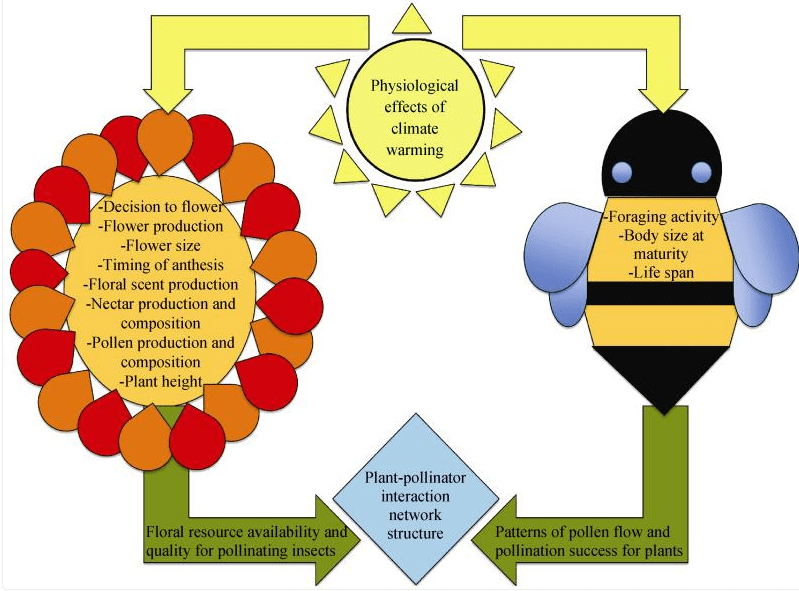
Source: Scaven & Rafferty, 2013
Impacts of Climate Change on the Biodiversity of Ecosystems
A UN report from 2019 estimates one million species are under threat of extinction, with many predicted to disappear in the coming decades. Some species and ecosystems (both land and ocean dwelling) are more sensitive to climate change than others, such as mountain and arctic ecosystems. Climate change is affecting ecosystems in many ways, including:
- Species Loss: Climate change is causing local and global extinctions. For example, the North Atlantic Right Whale is close to extinction owing to climate change and other factors.
- Ecosystem Shifts: Climate change is altering the distribution of plants, animals, and viruses, which can lead to the spread of disease and the loss of food and medicine.
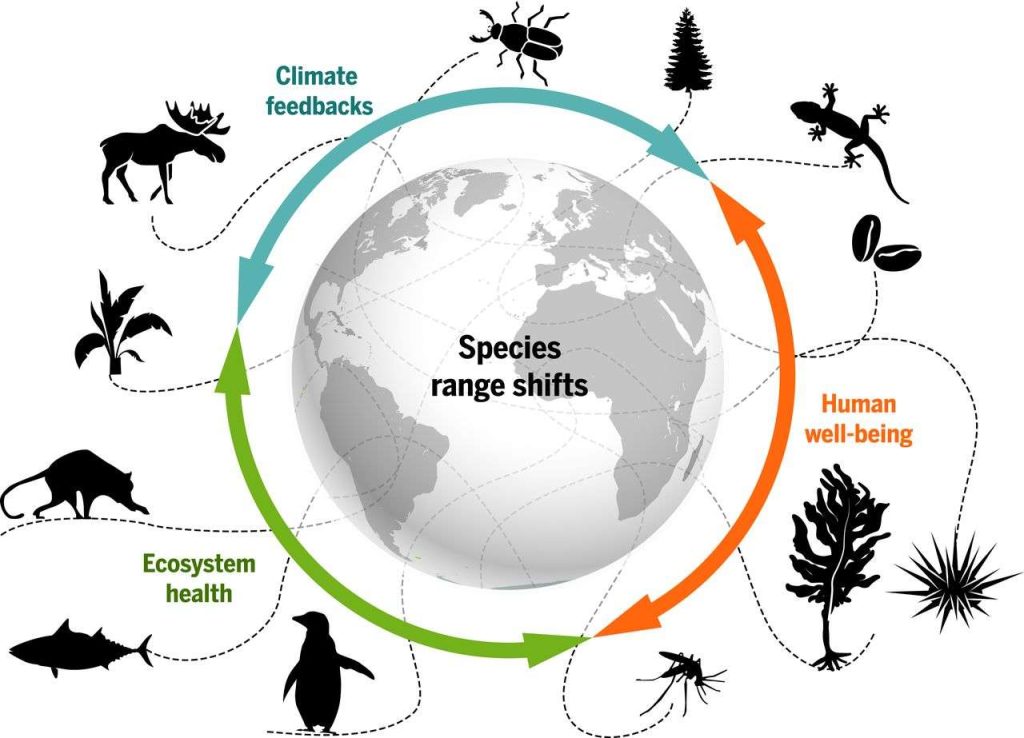
Source: PECL et al., 2017
- Ocean Acidification: The ocean absorbs carbon dioxide from the atmosphere, making the water more acidic. When the ocean is too acidic it makes it harder for organisms like coral and clams to build their shells.
- Sea Level Rise: Rising sea levels threaten coastal areas with erosion and storm surges.
- Wildfires: A hotter and drier climate leads to more intense wildfires that spread faster and burn longer.
- Invasive Species: Climate change can make it easier for invasive species to spread. Warmer weather, changing rain patterns, and shifting ecosystems can create new places where invasive species grow, often pushing out native plants and animals.
- Ecosystem Services: Climate change can reduce ecosystem services like clean water, food, and timber.
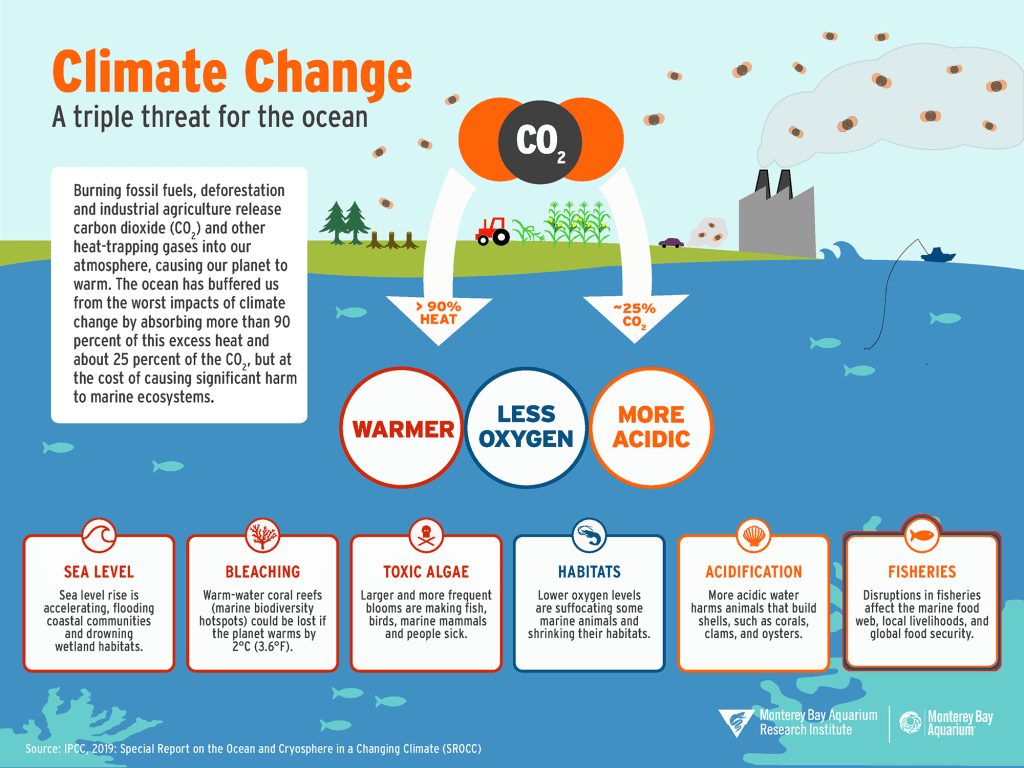
Source: MBARI, n.d
Impacts of Biodiversity Loss on Humans
Biodiversity loss directly impacts human health if ecosystem services are no longer adequate to meet social needs. Climate change impacts human health directly through extreme heat, flooding, droughts, hurricanes, and rising sea levels, causing injury, illness, or death. Indirect effects include air pollution, shifts in infectious disease patterns, increased waterborne illnesses, and food contamination. It also affects mental health and overall well-being (NIEHS, n.d).
Solutions and calls to action
Plants and animals at risk of extinction need our full attention. We must take meaningful action through policy changes and collective individual efforts (Lewis, 2022).
Biodiversity Conservation
Biodiversity conservation includes protecting habitats, limiting harmful agricultural practices, and domestic efforts. Key actions are removing threats, leaving wildlife undisturbed, building shelters, conserving water, managing grazing, and reducing irrigation. At home, controlling weeds, reducing disturbances, and monitoring pets can also help protect wildlife (Lewis, 2022). Conservation of forests offers important opportunities to protect biodiversity and slow climate change (TraceX, 2023).
Reduce, Reuse, Repair, and Recycle
Look at ways you can reduce the amount of waste that makes its way into landfill. Reduce consumer goods waste, such as food, clothes, and electrical appliances.
- Avoid single-use plastics.
- BYO (Bring your own) reusable water bottles, shopping bags, cutlery, straws, lunch containers, and coffee cups.
- Support bulk food stores and use your own reusable containers for your purchases.
- Make your lunches and pack them in reusable containers.
- Buy fruit and vegetables loose (Parker, 2023).
The Sustainable Play Preschool Waste Hierarchy pyramid below is a great guide for considering appropriate actions for disposing of unwanted items (Parker, 2023).

Source: (Parker, 2023)
Support Political Action
Support local, regional, and political action that aims to protect and restore biodiversity (The Royal Society., n.d). Governments should work together with international bodies to address biodiversity issues. Unsustainable food production harms biodiversity. Governments can promote sustainable fishing by certifying seafood products. They can protect national parks with laws and offer subsidies to farmers for eco-friendly practices (Lewis, 2022).
Be a Responsible Pet Owner
Keep domestic animals safely contained, and monitored when outside, particularly at night. Domestic cats are one of the number one killers of native species, responsible for killing millions of small mammals, birds, and reptiles each year. By keeping your cat inside or in a cat run, you are not only protecting them from harm but also helping to protect native species (Parker, 2023). Research in Australia revealed that by allowing cats to roam free, predation on local prey per square kilometre in residential areas is 28–52 times larger than predation rates by feral cats in natural environments. Cats have caused such devastating impacts on Australian wildlife that cat predation is listed as a key threat to native wildlife within national legislation (Hiseman, 2022).
Educating Children
To guide the next generation, we must educate children about biodiversity, ecosystems, the threats they face, and the opportunities to restore them (The Royal Society., n.d). We must foster awareness and education about the importance of biodiversity, inspiring individuals and communities to take action, and promoting a collective effort towards a thrivable future.
Change What You Eat
Unsustainable farming methods, the expansion of agricultural land, and our meat-heavy Western diets all threaten biodiversity. Converting natural habitats to agricultural land has resulted in one-quarter of all remaining mammal species being threatened with extinction. Research has also shown that agricultural intensification now means that more than half of European bird species are threatened or in decline. To reverse biodiversity loss, we must change both what we eat and how much we consume (Hiseman, 2022).
Develop Green Economies
Governments must develop green economies, through a set of recommendations and concrete entry points for action. These will build momentum for addressing biodiversity issues in the international policy arena. They’ll also improve transparency and circularity in value chains, and promote sufficiency-oriented behaviours.
Save The Bees
Bees are important to preserving biodiversity but are increasingly under attack from varroa mites. You can help save them by planting nectar-producing wildflowers in your garden, or even building bee boxes for local bees to call home. When embarking on DIY (do it yourself) home projects, be mindful about the products you use, as standard backyard pesticides can be harmful or deadly to bees (Yale, 2020).
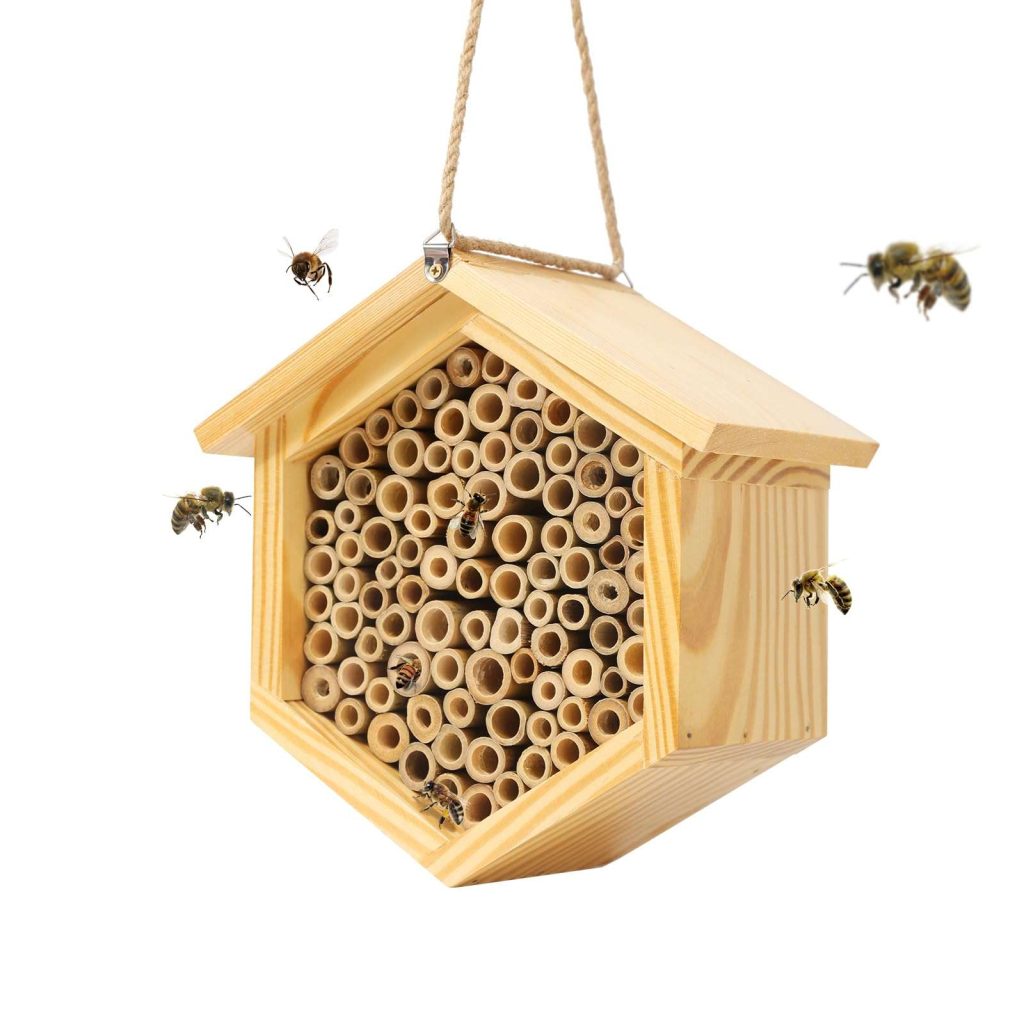
Source: Mason-House, 2024
Conclusion and Call to Action (CTA)
Biodiversity loss can negatively affect our lives in many ways. The problems mentioned previously are just a few examples of what might happen. Protecting biodiversity is a simple and accessible task we can all be involved with as individuals. You can help by buying local food, using recycled products, saving water, and spending time in nature to appreciate it. Every small action makes a difference.
Reducing pollution and minimising our carbon footprint are essential steps to mitigate climate change and biodiversity loss. Simple actions, such as using cleaner energy, reducing waste, and cutting emissions, can make a big difference in biodiversity conservation. Responsible land and resource management, like sustainable agriculture, is also critical. Adopting innovative technologies can enhance our understanding of climate change and biodiversity loss. With better knowledge, we can create more effective conservation strategies to address biodiversity loss and restore damaged habitats. Education can inspire individuals and communities to take action, whether by protecting local wildlife, reducing consumption, or supporting conservation projects. By working together and making thoughtful choices, we can promote a collective effort to preserve biodiversity and build a thrivable future for all.
Achieving the UN Sustainable Development Goals (SDGs) and how they link to the Climate Change and Biodiversity Loss
Addressing biodiversity loss and climate change is essential to protecting life on Earth. These efforts are also key to reducing the impacts of climate change. The United Nations highlights this importance through its Sustainable Development Goals (SDGs). SDG15 focuses on life on land, SDG13 promotes climate action, and SDG14 targets life below water. Together, these goals guide global efforts to preserve ecosystems and create a sustainable future.
SDG15: Life on Land
Biodiversity is essential for healthy ecosystems on land. Losing species harms services like clean air, water, and food, and disrupts ecosystems. Protecting life on land involves creating protected areas, restoring habitats, and using sustainable practices. Addressing causes like deforestation, pollution, and climate change is also key to preserving biodiversity.
SDG13: Climate Action
Climate change is a major driver of biodiversity loss, as rising temperatures, changing precipitation, and extreme weather events disrupt ecosystems. Protecting biodiversity and taking climate action go hand in hand. By reducing greenhouse gas emissions, promoting sustainable practices, and conserving ecosystems, we can mitigate climate change and prevent further biodiversity loss. Both efforts are essential for a sustainable future.
SDG12: Life Below Water
Marine biodiversity is crucial for healthy oceans, which support fish, protect coastlines, and provide food. Climate change harms marine life through rising sea temperatures, acidification, and habitat loss. To protect marine biodiversity, we must reduce carbon emissions, fight pollution, and create marine protected areas. Addressing both climate change and biodiversity loss is key to preserving ocean health and ensuring sustainable resources.
A Thrivable Framework
The THRIVE Framework is a Holistic Regenerative Innovative Value Entity Framework that integrates distinct approaches adopted by institutions concerned with sustainability. It provides a clear template for evaluating sustainability by integrating The 12 Foundational Focus Factors. Contrasting mere sustainability, the concept of thrivability looks beyond environmental and social issues.
Biodiversity conversation comes under The Foundational Focus Factors (FFFs) complex wicked problems, finite resources, and values-based innovation. To work towards a resolution, science-based targets must be used to allow the clear attainment of goals. This allows clear targets to work towards. THRIVE aims for humanity to overcome planetary devastation and build foundations for a world that thrives. Subscribe to the free newsletter to stay informed about thrivability. Explore the informative podcast series and watch educational content on YouTube.



